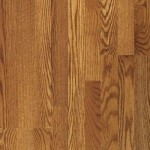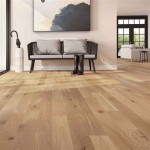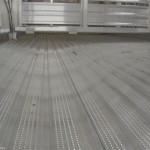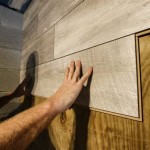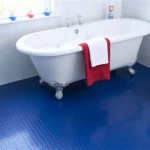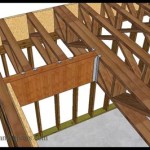Wood Flooring: Exploring the Enduring Appeal of White Oak
White oak wood flooring has cemented its position as a highly desirable and versatile choice for homeowners, designers, and builders alike. Its combination of durability, aesthetic appeal, and workability makes it a compelling option for various interior design styles. Understanding the characteristics and benefits of white oak flooring is crucial for making informed decisions when selecting flooring materials.
The term "white oak" encompasses several species within the *Quercus* genus. While subtle variations exist between these species, they share common traits that contribute to the overall desirability of white oak as a flooring material. This widespread availability allows for consistent sourcing and grading, contributing to predictable performance and aesthetic outcome.
Durability and Longevity of White Oak
One of the primary reasons for white oak's popularity is its inherent durability. Ranked high on the Janka hardness scale, which measures the resistance of wood to denting and wear, white oak surpasses many other hardwood species commonly used for flooring. This hardness translates to a floor that can withstand the rigors of daily life, including foot traffic, furniture movement, and occasional impacts. A well-maintained white oak floor can last for generations, making it a worthwhile investment in the long-term value of a home.
White oak's closed grain structure contributes significantly to its durability. Unlike red oak, which possesses more open pores, white oak's tightly packed cells make it considerably more resistant to moisture penetration. This inherent water resistance is a crucial factor, especially in environments prone to spills, humidity fluctuations, or potential leaks. While not waterproof, this characteristic allows white oak to withstand moisture exposure better than many other wood species, reducing the risk of warping, cupping, or other moisture-related damage.
The inherent durability of white oak extends beyond its resistance to physical damage and moisture. It also demonstrates good resistance to decay and insect infestation. Natural tannins present in the wood act as a deterrent to many common wood-boring insects, minimizing the risk of structural damage over time. This natural resistance reduces the need for potentially harmful chemical treatments, contributing to a healthier indoor environment.
However, routine maintenance is still crucial for preserving the longevity and appearance of white oak floors. Regular sweeping or vacuuming to remove dirt and debris prevents scratching and abrasion. Prompt cleanup of spills prevents staining and moisture damage. Protective pads beneath furniture legs minimize indentations. Periodic refinishing, typically every 10-20 years depending on the level of traffic, will restore the floor's original luster and protect it from wear.
Aesthetic Versatility and Design Options
Beyond its practical advantages, white oak flooring offers significant aesthetic versatility, making it adaptable to a wide range of design styles. The wood's grain pattern, ranging from relatively straight to swirling and figured, provides visual interest and character. Its natural color, a warm tan with subtle undertones, serves as an excellent backdrop for various color palettes and design schemes. This neutral canvas allows homeowners to customize the overall look and feel of their space through furniture, paint colors, and accessories.
White oak readily accepts stains and finishes, offering virtually limitless possibilities for customization. Lighter stains can enhance the wood's natural beauty, creating a bright and airy atmosphere. Darker stains can create a more dramatic and formal look. The choice of finish, whether matte, satin, semi-gloss, or high-gloss, further impacts the overall aesthetic. Matte finishes provide a more natural and understated look, while glossy finishes reflect more light and create a sense of luxury.
The cut of the white oak lumber also contributes to its visual appeal. Plain-sawn white oak, the most common and cost-effective cut, features a cathedral grain pattern that is both classic and timeless. Rift-sawn white oak, cut at a 45-degree angle to the growth rings, produces a linear grain pattern with minimal figuring. Quarter-sawn white oak, cut perpendicular to the growth rings, results in a highly stable and visually stunning floor with a distinctive flake pattern known as "medullary rays." These different cut options allow for even greater customization and design flexibility.
The width and length of the planks also play a significant role in the overall appearance of the floor. Wider planks generally create a more expansive and modern feel, while narrower planks can evoke a more traditional and rustic aesthetic. Longer planks tend to create a more seamless and sophisticated look, while shorter planks can add character and visual interest. The choice of plank size should be carefully considered to complement the overall design of the space.
Furthermore, white oak can be used to create various patterns and designs, such as herringbone, chevron, or parquet, adding another layer of visual interest and sophistication. These intricate patterns require precision installation but can dramatically enhance the aesthetic appeal of a room. The combination of white oak's inherent beauty and its ability to be customized allows for the creation of truly unique and personalized flooring solutions.
Sustainable Sourcing and Environmental Considerations
In today's world, sustainability is an increasingly important consideration when choosing building materials. White oak, when sourced responsibly, can be a sustainable flooring option. Ensuring that the white oak flooring comes from sustainably managed forests is crucial. Look for certifications from organizations such as the Forest Stewardship Council (FSC), which verifies that the wood has been harvested in an environmentally responsible and socially beneficial manner.
Sustainable forestry practices ensure the long-term health and productivity of forests, minimizing the environmental impact of harvesting. These practices include selective logging, which removes only mature trees while leaving younger trees to grow, as well as reforestation efforts to replace harvested trees. Supporting sustainably managed forests helps to protect biodiversity, maintain water quality, and mitigate climate change.
The durability and longevity of white oak flooring also contribute to its sustainability. Because it can last for generations, it reduces the need for frequent replacements, minimizing the consumption of resources and the generation of waste. Furthermore, wood is a renewable resource, unlike many other flooring materials that are derived from non-renewable resources. Properly managed forests can provide a sustainable supply of wood for future generations.
Additionally, consider the environmental impact of the manufacturing process. Look for flooring manufacturers that use environmentally friendly finishes and adhesives, minimizing the release of volatile organic compounds (VOCs) into the air. VOCs can contribute to indoor air pollution and pose health risks. Choosing low-VOC or no-VOC products ensures a healthier indoor environment for occupants.
Reclaimed white oak flooring is another sustainable option. Reclaimed wood is salvaged from old buildings, barns, or other structures, giving it a second life. Reclaimed wood often has a unique character and patina, adding to its aesthetic appeal. Using reclaimed wood reduces the demand for newly harvested wood, conserving forest resources and reducing waste. While reclaimed white oak flooring may be more expensive than newly harvested wood, it is a sustainable and environmentally conscious choice.

Home Decorators Collection Natural White Oak 3 8 In T X 7 5 W Tongue Groove Wire Brushed Engineered Hardwood Flooring 42 948 Sq Ft Case 50296 The Depot

What Are The Pros And Cons Of White Oak Hardwood Floors Artisan Wood Llc

White Oak Newport S Beach Brushed Mill Run 1 2 X 7

Shaw Repel Reflections White Oak Engineered Hardwood Flooring Natural 7 Greenflooringsupply Com

How White Oak Flooring Is Changing Home Design Carlisle Wide Plank Floors

White Oak Hardwood Flooring Vermont Wide Plank

Unfinished Engineered Hardwood Liberty White Oak Builddirect

White Oak Flooring Hardwood Floors Unfinished

Nuvelle Royale Ii Collection 9 5 In European White Oak Monte Floorzz

Series Woods Professional 12mm Laminate Flooring White Oak
Related Posts

